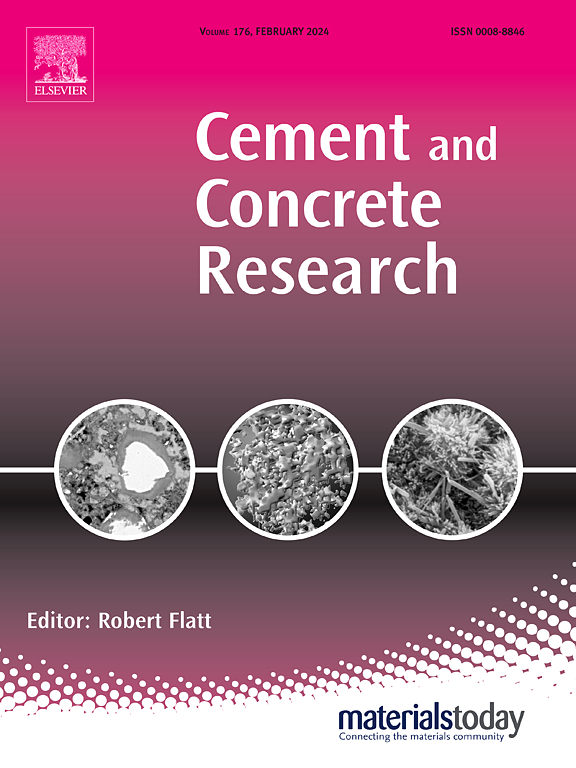To what extent can polycarboxylate superplasticizers enhance the dispersion characteristics of modified graphene oxide in cement? Insights from ultrasonication and high-shear mixing methods
IF 13.1
1区 工程技术
Q1 CONSTRUCTION & BUILDING TECHNOLOGY
引用次数: 0
Abstract
The utilization of graphene oxide (GO) as a nano-reinforcement material in cement composite has generated substantial interest. However, the aggregation of GO nanosheets in the highly alkaline environment of cement matrix, along with inadequate dispersibility, negatively impacts the performance of cement composite and limits its potential application. This study was to find efficient methods to enhance the dispersion behavior of GO in cementitious materials by understanding the effects of various superplasticizers on the dispersibility behavior of GO. Five different polycarboxylate ether superplasticizers (PCE-SPs) in dosages ranging from 5 to 20 wt% were evaluated by two different methods - ultrasonication (ULS) and high-shear mixing (NULS). Raman spectroscopy, zeta potential, dynamic light scattering, visual inspection, and optical microscopy were used to examine the dispersion characteristics. The results revealed a significant enhancement in the dispersion properties of the GO-colloidal mix when altered with PCE-SPs MG8700 and 20HE at an optimal proportion of 8–10 wt% for the NULS and 10–12 wt% for the ULS method. Moreover, the intense cavitation effect produced during the harsh treatment of ULS causes a higher degree of structural damage to the GO-nanosheets. In contrast, the NULS approach demonstrated effective dispersion of the GO-nanosheets with reduced structural damage and fragmentation. The findings of this study highlight that treating GO with suitable PCE-SPs at the appropriate dosage using the NULS method presents a promising prospect for achieving better dispersion.

聚羧酸型高效减水剂能在多大程度上增强改性氧化石墨烯在水泥中的分散特性?超声和高剪切混合方法的启示
氧化石墨烯(GO)作为纳米增强材料在水泥复合材料中的应用引起了极大的兴趣。然而,氧化石墨烯纳米片在水泥基体的高碱性环境中聚集,加之分散性不足,对水泥复合材料的性能产生负面影响,限制了其潜在的应用前景。本研究旨在通过了解各种高效减水剂对氧化石墨烯分散行为的影响,寻找增强氧化石墨烯在胶凝材料中分散行为的有效方法。采用超声(ULS)和高剪切混合(NULS)两种不同的方法对5种不同剂量的聚羧酸醚高效减水剂(PCE-SPs)进行了评价。利用拉曼光谱、zeta电位、动态光散射、目视检查和光学显微镜检查色散特性。结果显示,当PCE-SPs MG8700和20HE以8-10 wt% (NULS)和10-12 wt% (ULS)的最佳比例改变时,氧化石墨烯胶体混合物的分散性能显著增强。此外,在ULS的严酷处理过程中产生的强烈空化效应会对氧化石墨烯纳米片造成更高程度的结构破坏。相比之下,NULS方法证明了氧化石墨烯纳米片的有效分散,减少了结构损伤和碎片。本研究的结果强调,使用NULS方法以适当剂量用合适的PCE-SPs处理氧化石墨烯具有实现更好分散的良好前景。
本文章由计算机程序翻译,如有差异,请以英文原文为准。
求助全文
约1分钟内获得全文
求助全文
来源期刊

Cement and Concrete Research
工程技术-材料科学:综合
CiteScore
20.90
自引率
12.30%
发文量
318
审稿时长
53 days
期刊介绍:
Cement and Concrete Research is dedicated to publishing top-notch research on the materials science and engineering of cement, cement composites, mortars, concrete, and related materials incorporating cement or other mineral binders. The journal prioritizes reporting significant findings in research on the properties and performance of cementitious materials. It also covers novel experimental techniques, the latest analytical and modeling methods, examination and diagnosis of actual cement and concrete structures, and the exploration of potential improvements in materials.
 求助内容:
求助内容: 应助结果提醒方式:
应助结果提醒方式:


